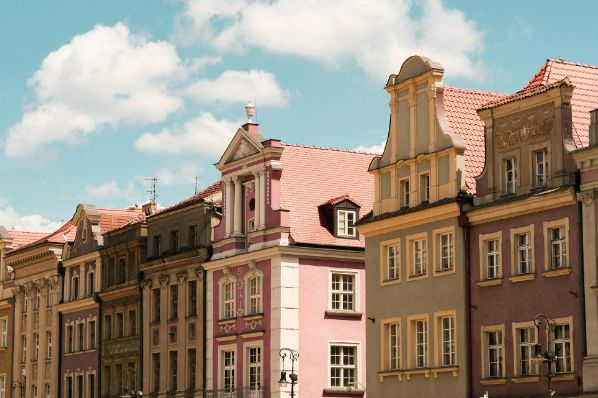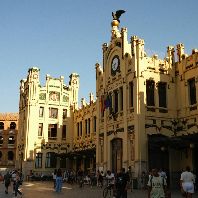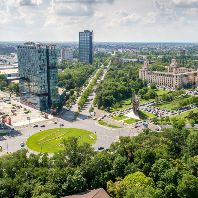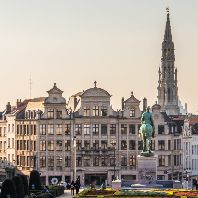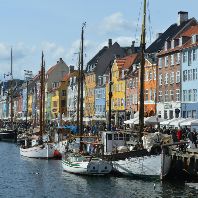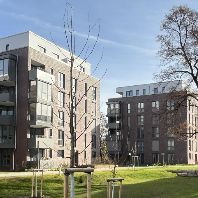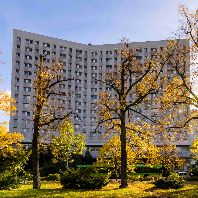Why Poznan (Poland) is the best city to invest in Europe?
Poznan is recognized as one of the largest cities in Poland, known for its strong academic, business and fair activities. The city has a population of c. 550,000, which makes it the fifth-largest city in Poland.
In terms of academic and scientific research, Poznan is a leading location in Poland. It is home to 25 universities, including 8 public universities, with a total of 120,000 students. This means that every fifth resident in Poznan is a student. In addition, several scientific research and development entities support the scientific work of the universities.
Poznan is also an important business centre in Poland. Over 100,000 business entities are located in the city, and it has one of the largest numbers of companies with foreign capital in Poland. Foreign capital mainly comes from Germany, France, Japan, Great Britain and the USA. Notably, the city has seen major investment in industrial production, particularly in the automotive, food and pharmaceutical sectors, as well as in trade and real estate (including office, commercial, hotel and residential properties). As the capital city of the Wielkopolska Region, Poznan is recognized as one of the top locations for foreign investment in the country.

Poznan is a major and promising office market in Poland.
Poznan is the sixth-largest office market in Poland with an office stock of over 661,000m2, following Warsaw, Krakow, Wrocław, Tricity, and Katowice. It is considered one of the three most liveable cities and is often recognized as the best place to live.
Joanna Bartoszewicz, Advisor, Office Tenant Representation, Newmark Polska, remarks that Poznan is a city that is great not only for living but also for doing business. The city is well-connected and compact, and it has grown around the Poznan International Fair for many years. The fair became the region's gateway to Western Europe in the post-war era, and its inhabitants have always recognized the potential of learning foreign languages. Poznan has a high number of skilled employees with a command of English, German, French, and other Western languages, which makes it a preferred destination for shared services companies.
Poznan is the fourth-largest academic centre in Poland, with 22 tertiary education institutions and a student population of 113,873. Some of the country's most well-known brands, such as Zabka and Allegro, were born in Poznan.
32,400m2 of contemporary office space were introduced to the Poznan market in the first three quarters of 2023, positioning it as the third-highest result for regional cities in Poland. Skanska developed the largest completion, Building E, which is part of the Nowy Rynek complex, a mixed-use project located within a few minutes walk from the Old Town. Ultimately, the multiphase project will include five buildings with a total usable area of approximately 100,000m2, and all the buildings will have a shared patio/square, which serves as a public space for meetings, recreation, and entertainment.
According to Joanna Bartoszewicz, nearly 40% of modern office stock is concentrated in Poznan's centre, bordered by Solna, Małe Garbary, Matyi, Krolowej Jadwigi, and Roosevelta streets, as well as the Warta River to the east. There are also office buildings near Lake Malta, Grunwaldzka Street (Pixel complex), and the western part of the city, specifically in Bułgarska Street, featuring Business Garden Poznan, the largest office park in Poznan.
Joanna Bartoszewicz believes that Poznan's vacancy rate of 13.2% at the end of the third quarter is a healthy level and one of the lowest for regional cities. More than 87,000m2 of office space in Poznan is currently unoccupied. The majority of this space is located in office buildings constructed within the last five years, most of which are attractive and will soon find tenants.
New construction activity has slowed down due to the wait-and-see approach of the real estate market. In the capital city of Greater Poland, there is currently just over 65,000m2 of office space under construction, with the largest project being AND2 (formerly known as Andersia Silver) located in Andersa Square, opposite the Stary Browar complex. Once completed, it will be the tallest building in the city standing at 116 metres and will provide office accommodation along with a hotel and service outlets.
According to Joanna Bartoszewicz, over 60,000m2 of modern office space is being planned and is scheduled for delivery between 2025-2027. The pipeline includes several noteworthy projects, such as the office space in Stara Rzeznia, a multifunctional complex situated in the city centre. Another significant development that is expected to have a considerable impact on the growth of Poznań is Cavalia, a multiphase project located at the site of former military barracks and stables that will be revitalized and combined with new buildings. The project will offer office and service space, as well as apartments, says the expert from Newmark Polska.

The current state of the real estate industry and rental market in Poznan.
Cities like Poznan, where tech and IT industries are growing, are becoming more attractive to workers who prefer to rent apartments. This trend is increasing demand for modern, well-located rental properties.
Trei Real Estate GmbH (Trei) has been granted the authorization to construct their inaugural rental housing project in Poland in 2023. The development, named UP2U, will comprise three buildings and will offer a total of 460 one- to three-room apartments, covering an area of c. 20,000m2. It will be situated in proximity to the town centre of Poznan. More detailed information can be found here.
The rental market is evolving with the use of technology, which is making the rental process more efficient for both landlords and tenants. Digital platforms are now commonly used for property listings, virtual tours, and online leasing agreements.
The rental market is also being influenced by a trend towards sustainability and green living, resulting in a growing demand for eco-friendly features such as energy-efficient appliances, sustainable building materials, and green spaces. This shift towards sustainability is largely driven by younger tenants and those with a heightened environmental awareness, who prioritize reducing their ecological footprint.
Image source - Pexels.
